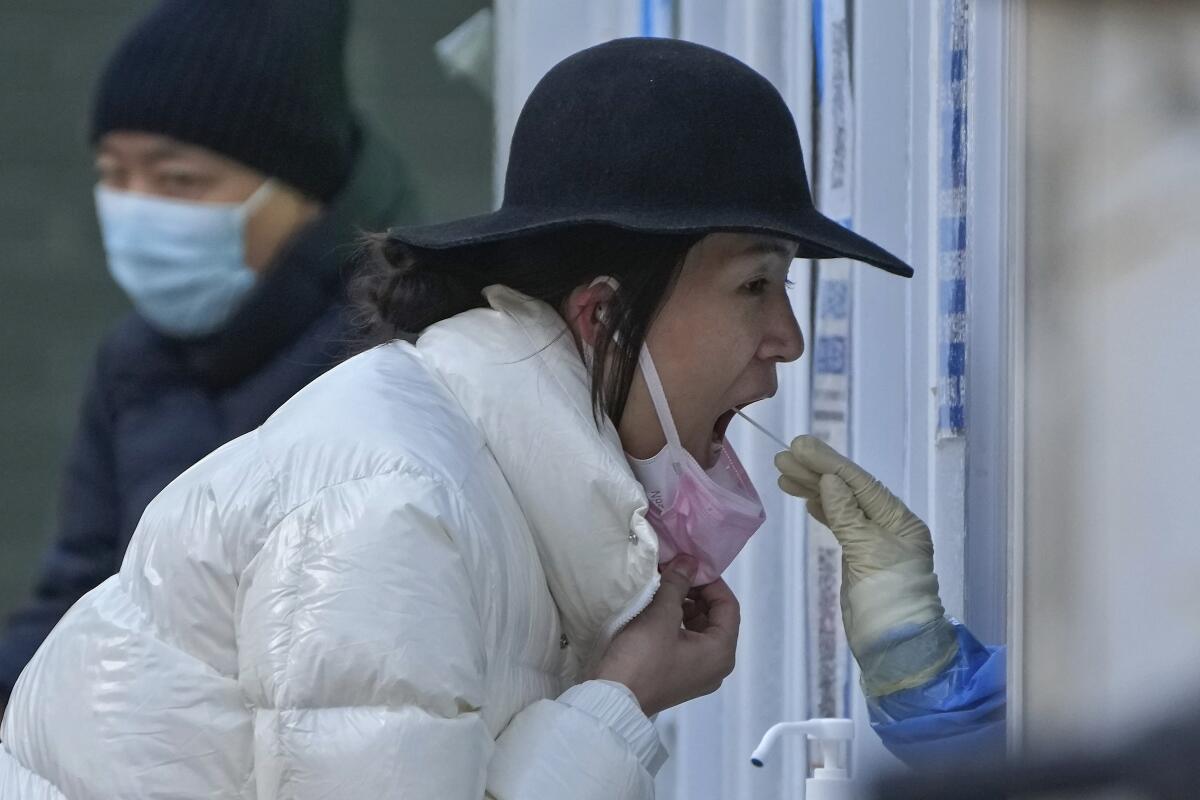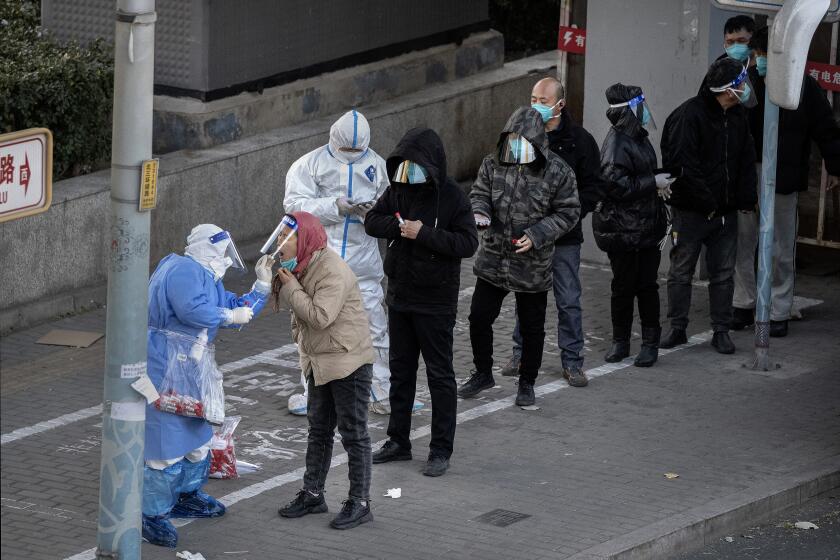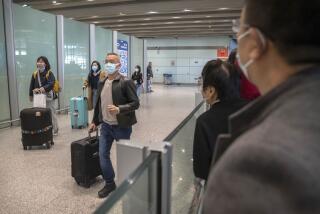China announces rollback of strict anti-COVID measures

- Share via
BEIJING — China rolled back rules on isolating people with COVID-19 and dropped coronavirus test requirements for some public places Wednesday in a dramatic change to a strategy that confined millions of people to their homes and sparked protests and demands for President Xi Jinping to resign.
The move adds to earlier easing that fueled hopes Beijing was scrapping its “zero-COVID” strategy, which is disrupting manufacturing and global trade. Experts warn, however, that restrictions can’t be lifted completely until at least mid-2023 because millions of elderly people still must be vaccinated and the healthcare system strengthened.
China is the last major country still trying to stamp out transmission of the coronavirus, whereas many nations have switched to trying to live with it. As they lift restrictions, Chinese officials have also shifted to talking about the virus as less threatening — a possible effort to prepare people for a similar switch.
People with mild cases will be allowed for the first time to isolate at home instead of going to sometimes overcrowded or unsanitary quarantine centers. That addresses a major irritation that drove the outpouring of anger.
Public facilities — except for “special places” such as schools, hospitals and nursing homes — will no longer require visitors to produce a “health code” on a smartphone app that tracks their coronavirus tests and whether they have been to areas deemed at high risk of infection, the government said.
Local officials must “take strict and detailed measures to protect people’s life, safety and health” but at the same time “minimize the impact of the epidemic on economic and social development,” the statement said.
First-time protesters in China grapple with how much agency they can wrest from an authoritarian government after the largest demonstrations since 1989.
China’s restrictions have helped to keep case numbers low, but that means few people have developed natural immunity, a factor that might set back reopening plans if cases surge and authorities feel compelled to reimpose restrictions.
Still, after three years of warning the public about COVID-19’s dangers, Chinese officials have begun to paint it as less threatening.
People with mild cases “can recover by themselves without special medical care,” Wu Zunyou, chief epidemiologist of the China Centers for Disease Control, said on his social media account. “The good news is that the data show the proportion of severe cases is low.”
The latest changes are “small steps” in a gradual process aimed at ending restrictions, Liang Wannian, a member of a group of experts advising the National Health Commission, said at a news conference.
Protesters in China are eager to see an easing of “zero-COVID” rules, but health experts warn that doing so could prompt a massive health emergency.
“We will look at it, study and judge, and analyze again,” said Liang, one of China’s most prominent anti-epidemic experts.
The government’s goal is “to return to the state before the epidemic, but the realization of the goal must have conditions,” Liang said.
Dr. Yanzhong Huang, an expert on public health in China, also emphasized the gradual nature of the announcement.
The new measures are a shift away from “zero COVID” — but “not a road map to reopening,” said Huang, director of the Center for Global Health Studies at Seton Hall University.
“When implemented, these measures may generate dynamics that fuel the rapid spread of the virus even though China is not ready for such a dramatic shift,” he said.
The government announced a campaign last week to vaccinate the elderly, which health experts say must be done before China can end restrictions on visitors coming from abroad. They say the ruling Communist Party also needs to build up China’s hospital system to cope with a possible rise in cases.
But public frustration is rising as millions of people are repeatedly confined at home for uncertain periods, schools close abruptly and economic activity falls.
Start your day right
Sign up for Essential California for the L.A. Times biggest news, features and recommendations in your inbox six days a week.
You may occasionally receive promotional content from the Los Angeles Times.
The changes have been rolled out despite a renewed spike in infections that started in October. On Wednesday, the government reported 25,231 new cases, including 20,912 without symptoms.
Xi’s government has held up “zero COVID” as proof of the superiority of China’s system compared with the United States and Western countries. China’s official death toll is 5,235 since the start of the pandemic, versus a U.S. count of 1.1 million.
Rules were left in place that allow apartment and office buildings to be sealed if infections are found. Complaints that families are confined for weeks at a time with uncertain access to food and medicine were a key driver of the protests.
The ruling party switched early this year to suspending access to neighborhoods or districts where infections were discovered instead of isolating whole cities.
Also on the rise are coronavirus-positive hospital patients, raising the specter of an indoor public mask order in L.A. County.
On Wednesday, the government said the scope of closures would be narrowed further to single apartment floors or buildings instead of neighborhoods. It said schools in communities with no outbreaks must return to in-person teaching.
That appeared to be a response to complaints that local leaders, threatened with the loss of their jobs in the event of outbreaks, impose closures that are destructive, arguably unnecessary and in excess of what the central government allows.
The demonstrations in at least eight major cities and on dozens of university campuses were the most widespread display of public dissent in decades. In Shanghai, some protesters shouted the politically explosive demand for Xi, China’s most influential figure in decades, to resign.
More to Read
Sign up for Essential California
The most important California stories and recommendations in your inbox every morning.
You may occasionally receive promotional content from the Los Angeles Times.
















